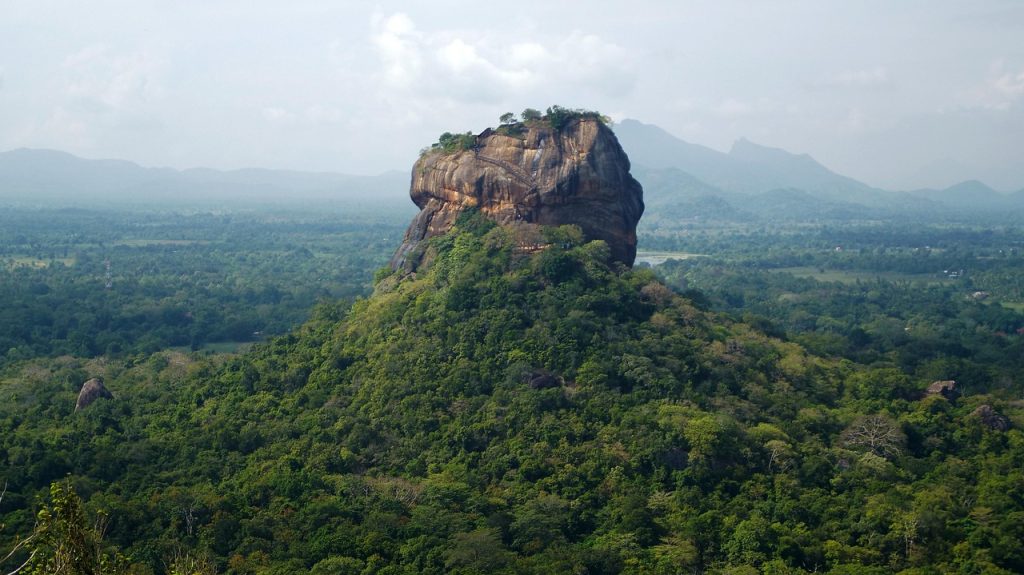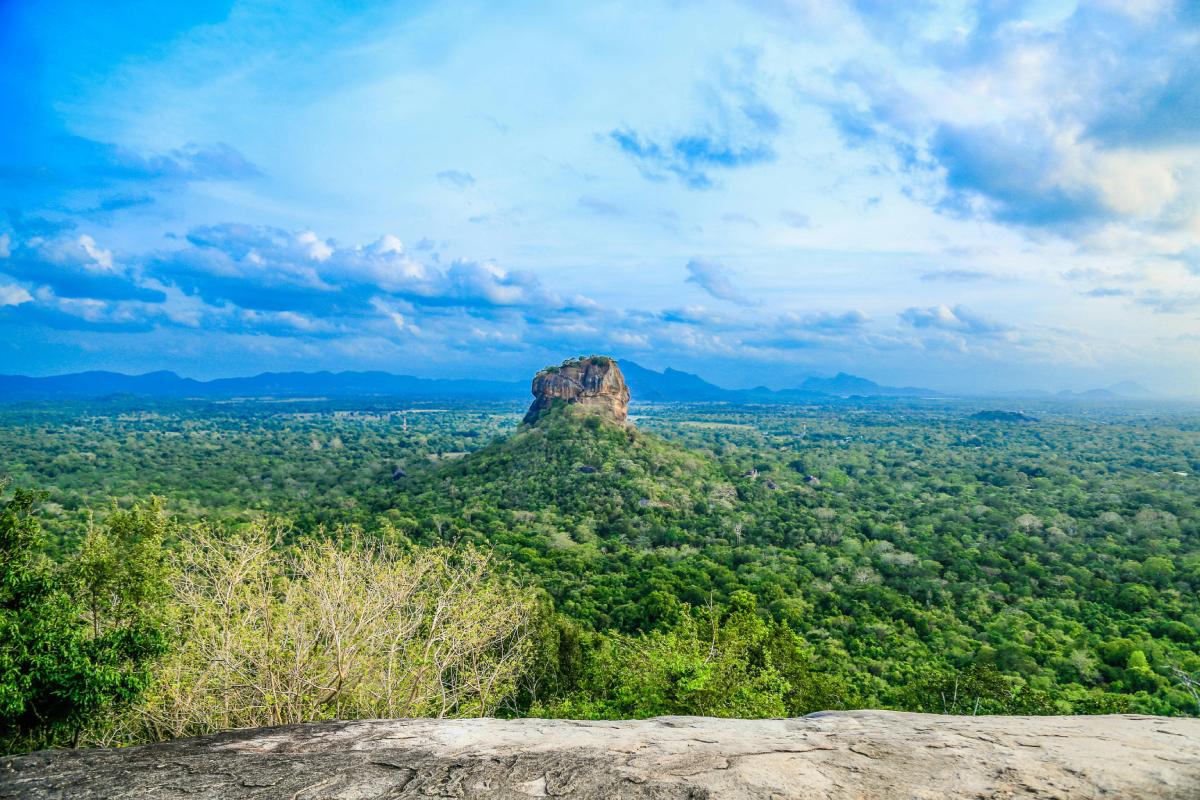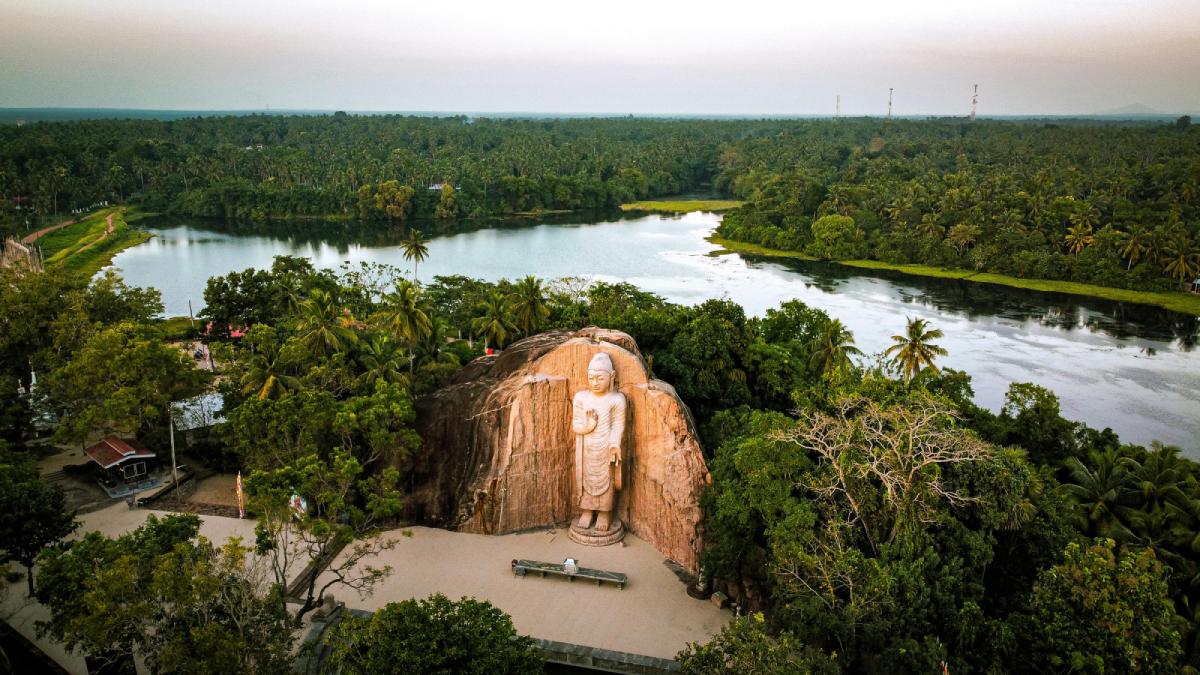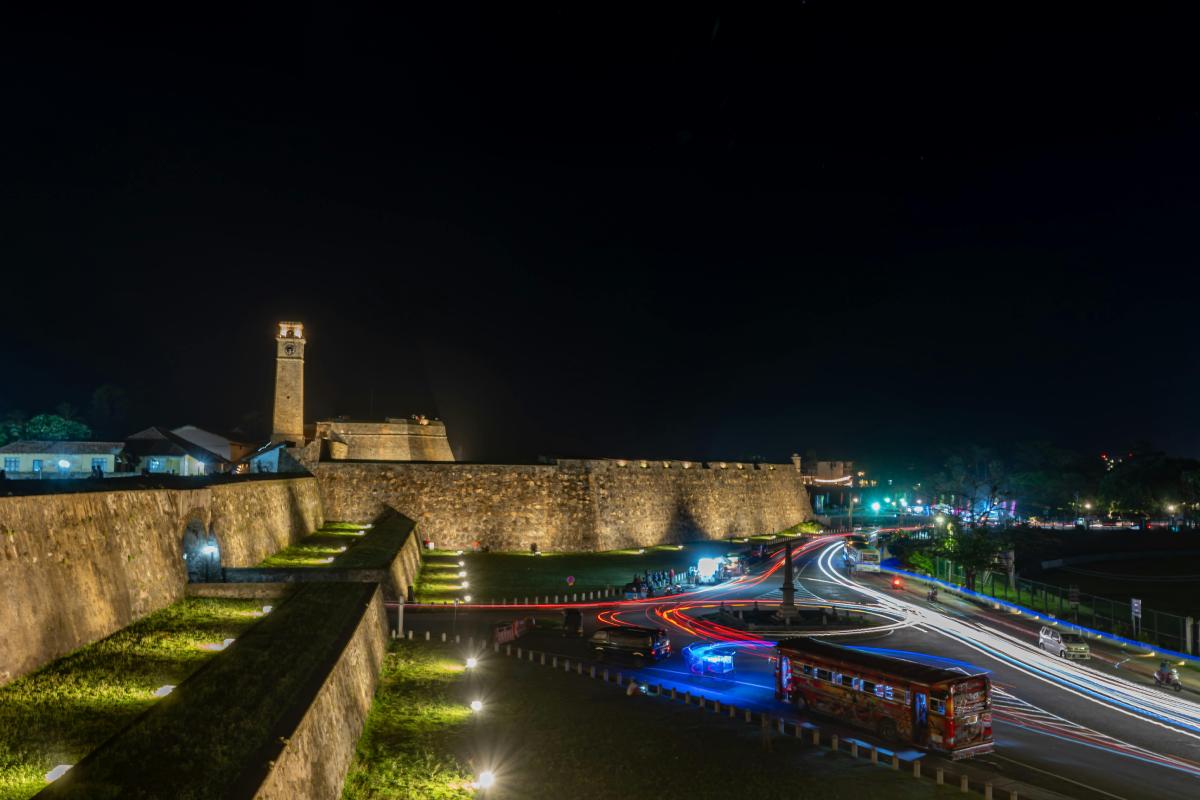Nestled in the central province of Sri Lanka, Pidurangala Rock stands as a magnificent geological formation that offers travelers an experience equal to, if not surpassing, its famous neighbor Sigiriya. While often overshadowed by the UNESCO World Heritage Site, this ancient rock formation holds its own unique history, panoramic views, and cultural significance that make it a must-visit destination for adventure seekers and history enthusiasts alike.
Pidurangala Rock Breathtaking Sigiriya Views
Pidurangala Rock is an enormous rock formation located just a few kilometers north of the iconic Sigiriya Rock Fortress in Sri Lanka’s Cultural Triangle. Rising approximately 200 meters above the surrounding plains, this massive natural structure was formed millions of years ago through geological processes that shaped the central highlands of the island.

The rock consists primarily of hardened magma from ancient volcanic activity that cooled and solidified over time. Centuries of erosion have sculpted its distinctive shape, creating various caves and overhangs that later became significant religious sites.
Unlike the flat-topped Sigiriya, Pidurangala features a more rugged, uneven summit that requires a moderate climb to reach the top. This natural formation has withstood the test of time, serving as a silent witness to the rich history that has unfolded around it.
Historical Significance and Ancient Connections
The historical importance of Pidurangala dates back to the 5th century CE during the reign of King Kashyapa (477-495 CE). When the king decided to build his magnificent palace and fortress atop Sigiriya Rock, he needed to relocate the Buddhist monastery that previously existed there. As a gesture of respect and reconciliation, he ordered the construction of a new monastery at Pidurangala, moving the monks and providing them with improved facilities.
Archaeological evidence suggests that the site may have been used for religious purposes even before this period, with some cave inscriptions dating back to the 1st century BCE. The ancient Pidurangala Vihara (temple) became a significant place of worship and meditation, attracting devotees from across the region.
Through the centuries, the monastery continued to function as an important religious center, even after Sigiriya was abandoned as the royal capital. Various kings and nobles made donations to maintain the temple, as evidenced by inscriptions found at the site.
The Spiritual Connection: Pidurangala Temple
At the base of the rock lies the Pidurangala Royal Cave Temple, which serves as the starting point for the climb. This temple complex includes several important religious elements:
The Cave Temple
The main temple is built into a natural cave at the base of the rock. Inside, you’ll find various Buddha statues and religious artifacts. The temple has been renovated and maintained over the centuries, with the most recent restorations taking place in the 20th century.
The Reclining Buddha
Perhaps the most impressive feature of the temple complex is the massive reclining Buddha statue. Partially reconstructed in modern times, this large figure represents Buddha entering Parinirvana (the final state of nirvana after death). The statue is approximately 12.5 meters long and was crafted from brick and mortar, then covered with plaster. Though parts of it have been damaged over time, the serene face and upper body remain remarkably intact, offering visitors a glimpse into the artistic and religious traditions of ancient Sri Lanka.
Monastic Quarters
Surrounding the main temple are the remains of what once were monks’ quarters, meditation spaces, and other monastic buildings. These structures provide insight into the daily lives of the Buddhist monks who called Pidurangala home for centuries.
The Climbing Experience: A Journey to the Summit
The ascent to the top of Pidurangala Rock offers an exciting adventure for travelers of varying fitness levels. While not as structured as the climb up Sigiriya, the journey to the summit provides its own unique challenges and rewards.
The Path and Difficulty Level
The climb begins at the temple entrance, where visitors pay a modest fee that helps maintain the site. The initial section consists of a series of well-maintained steps that lead through the temple complex. As you proceed higher, the path becomes more natural and less defined.
The total climbing time averages between 30-45 minutes for those of moderate fitness. While not technically difficult, some sections near the top require basic scrambling abilities, where climbers may need to use their hands for support. The final portion involves navigating around and over some large boulders, which adds an element of adventure to the experience.
What to Bring and When to Go
For the climb, it’s advisable to wear comfortable clothing and sturdy shoes with good traction. A hat, sunscreen, and plenty of water are essential, particularly during the warmer months. As with many natural attractions in Sri Lanka, early morning (around sunrise) or late afternoon (before sunset) offer the most pleasant climbing conditions and spectacular lighting for photography.
Many travelers choose to visit Pidurangala for sunrise, departing their hotels in darkness to reach the summit just as the first light breaks over the horizon. This timing not only provides cooler climbing conditions but also rewards hikers with breathtaking dawn vistas across the landscape.
The Spectacular View: Pidurangala’s Crown Jewel
The primary reason most travelers endure the climb to the top of Pidurangala is the unparalleled panoramic view that awaits them at the summit. This vista encompasses:
Sigiriya Rock Fortress
From Pidurangala’s summit, visitors are treated to what many consider the best view of Sigiriya Rock Fortress. This perspective showcases the full majesty of the ancient palace and fortress rising dramatically from the surrounding jungle, offering a photographic opportunity that cannot be obtained from any other vantage point.
The Central Plains
The summit provides a 360-degree view of Sri Lanka’s central plains, with lush forests, winding rivers, and agricultural fields stretching toward the horizon. On clear days, the distant mountains can be seen forming a misty blue outline at the edges of your field of vision.
Wildlife and Natural Beauty
The surrounding area is rich in biodiversity, and keen-eyed observers may spot various bird species soaring at eye level while enjoying the summit views. The combination of rocky outcrops, verdant forests, and open plains creates a diverse ecosystem that supports a wide range of flora and fauna.
Cultural and Religious Significance
Pidurangala continues to hold spiritual significance for local communities and Buddhist practitioners. During special religious holidays, such as Vesak (Buddha’s birthday) or Poson (commemorating the arrival of Buddhism in Sri Lanka), devotees may make pilgrimages to the temple, bringing offerings and participating in ceremonies.
The site represents an important connection between Sri Lanka’s natural landscape and its rich religious heritage. The fact that King Kashyapa chose to relocate the monks to Pidurangala rather than simply disband the monastery demonstrates the deep respect for religious institutions that has characterized much of Sri Lankan history.
Conservation and Sustainable Tourism
As Pidurangala gains popularity among international travelers, efforts to preserve both its natural environment and historical features have increased. The modest entrance fee helps fund maintenance of the pathways, temple buildings, and sanitation facilities.
Visitors are encouraged to follow responsible tourism practices:
- Stay on established paths to prevent erosion
- Carry out all trash
- Respect the site’s religious significance
- Dress appropriately when visiting temple areas (covering shoulders and knees)
- Support local businesses rather than large international chains
These measures help ensure that future generations can continue to enjoy the beauty and historical significance of Pidurangala Rock.
Practical Travel Information
Location and Access
Pidurangala Rock is located in the Central Province of Sri Lanka, approximately 2.5 kilometers north of Sigiriya Rock Fortress. Most visitors stay in nearby towns such as Sigiriya, Dambulla, or Habarana, all of which offer a range of accommodation options.
The site can be reached by:
- Tuk-tuk or taxi from nearby towns
- Private vehicle (parking is available near the temple entrance)
- As part of organized tours that often combine Pidurangala with visits to Sigiriya and other attractions in the Cultural Triangle
Entrance Fees and Hours
The entrance fee for Pidurangala is significantly lower than that of Sigiriya, making it an attractive alternative for budget-conscious travelers. As of recent reports, the entrance fee is approximately 500 Sri Lankan Rupees (about $2-3 USD) per person.
The site generally opens early in the morning (around 5:00 AM) to accommodate sunrise visitors and closes in the evening. However, as this is a less commercialized attraction, opening hours may be somewhat flexible.
Accommodation Options
The area around Pidurangala offers a variety of accommodation options:
- Luxury resorts with views of Sigiriya and the surrounding countryside
- Mid-range hotels with comfortable amenities
- Budget-friendly guesthouses and homestays that provide authentic local experiences
- Eco-lodges that emphasize sustainable tourism practices
Many accommodations can arrange transportation to Pidurangala and provide local guides if desired.
Comparing Pidurangala and Sigiriya: Which to Choose?
Many travelers to Sri Lanka’s Cultural Triangle find themselves deciding between climbing Pidurangala or Sigiriya. While both offer remarkable experiences, there are some key differences to consider:
Cost Difference
Sigiriya’s entrance fee is substantially higher (around $30 USD) compared to Pidurangala’s modest fee. For travelers on a budget, Pidurangala represents excellent value.
Crowd Experience
Sigiriya attracts significantly larger crowds, particularly during peak tourist seasons. Pidurangala, while growing in popularity, still offers a more peaceful and contemplative experience with fewer visitors.
Historical vs. Natural Focus
Sigiriya is primarily known for its archaeological significance—the palace ruins, frescoes, and engineered gardens. Pidurangala, while having its own historical elements, offers a more nature-focused experience with greater emphasis on the views and climbing adventure.
Physical Experience
Both require climbing, but Pidurangala’s ascent is less structured and more adventurous, requiring some scrambling over rocks. Sigiriya features metal staircases and more developed pathways throughout.
Many visitors choose to experience both, often climbing Pidurangala at sunrise to view Sigiriya from afar, then visiting Sigiriya itself later in their trip to appreciate its archaeological wonders up close.
The Best Times to Visit Pidurangala
Sri Lanka experiences distinct monsoon seasons that affect different parts of the island at different times. For the central region where Pidurangala is located, the following seasonal considerations apply:
December to March
This period generally offers the most favorable weather conditions, with less rainfall and moderate temperatures. The landscape is lush and green following the previous monsoon season.
April to September
The region experiences intermittent rainfall during these months, but mornings are often clear. The advantage of visiting during this “shoulder season” is encountering fewer tourists.
October to November
This is typically the wettest period for the central region, with heavy downpours that can make climbing conditions more challenging and potentially dangerous. Views may also be obscured by clouds and mist.
Regardless of the season, early morning climbs offer the best combination of comfortable temperatures and beautiful lighting conditions.
Conclusion: Pidurangala’s Enduring Appeal
Pidurangala Rock represents the perfect blend of natural beauty, historical significance, and adventurous experience that characterizes the best of Sri Lanka’s attractions. Whether you’re seeking spectacular photographs, historical insights, spiritual connection, or simply an exhilarating climb with a rewarding view, this ancient rock formation delivers an experience that often exceeds travelers’ expectations.
As tourism in Sri Lanka continues to evolve, Pidurangala stands as a testament to how natural landscapes and cultural heritage can be preserved while still allowing visitors to create meaningful connections with a destination. For those willing to rise early and embark on the moderate climb to its summit, Pidurangala offers moments of tranquility and wonder that remain among the most cherished memories of a Sri Lankan journey.
Whether visited as an alternative to Sigiriya or as a complementary experience, Pidurangala Rock deserves its growing reputation as one of Sri Lanka’s must-visit natural wonders. As you stand atop its ancient stones, gazing across at the majestic Sigiriya fortress with the golden light of dawn illuminating the landscape, you’ll understand why travelers are increasingly adding this hidden gem to their Sri Lankan itineraries.


